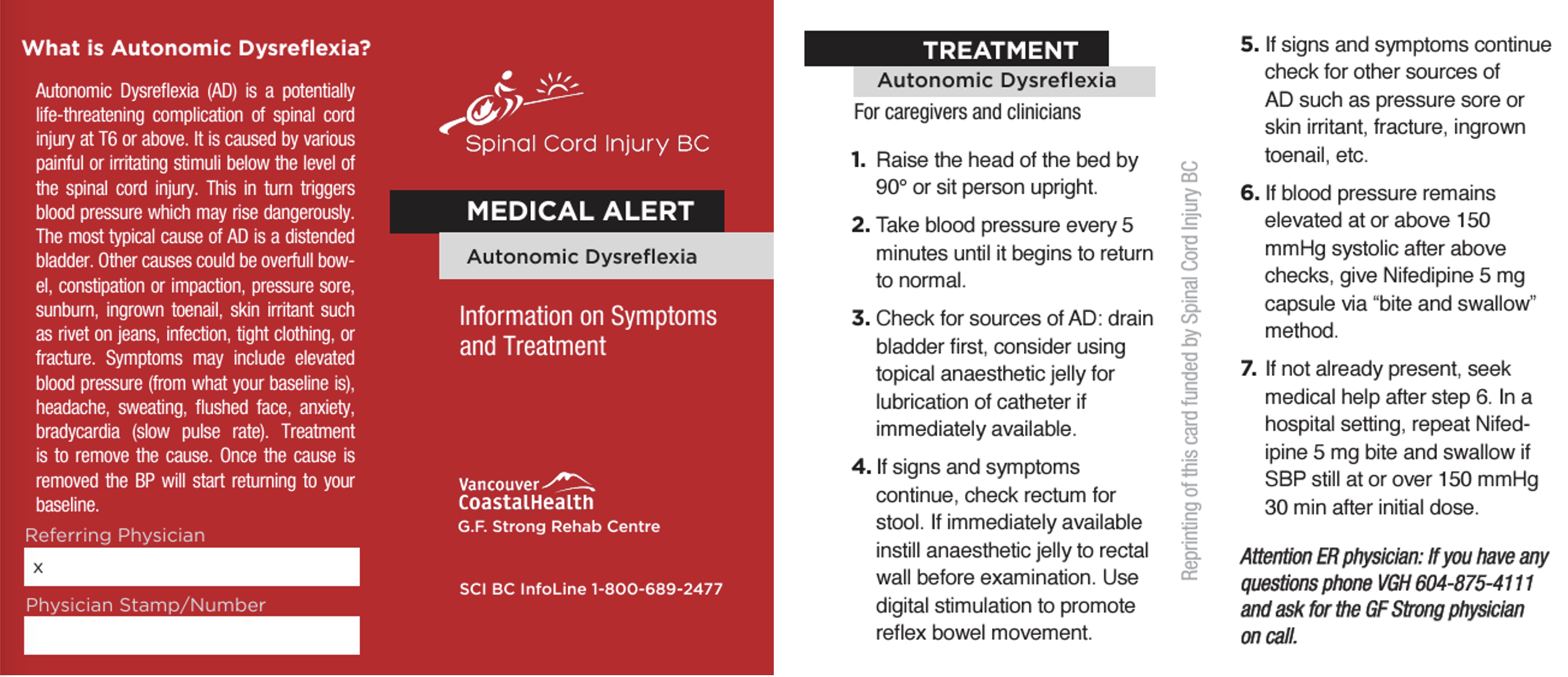Managment of Acute AD Episodes
There is growing evidence that education, knowledge, and management of this life-threatening condition is crucial for both medical personnel and people with SCI (McGillivray et al. 2009).
There is a well-established protocol for the management of AD developed by the Consortium for Spinal Cord Medicine (Consortium for Spinal Cord Medicine, 2020). When AD develops, the initial management of an episode involves placing the patient in an upright position to take advantage of an orthostatic reduction in blood pressure, and the loosening of any tight clothing (Consortium for Spinal Cord Medicine, 2020). Throughout the episode, blood pressure should be checked every 3-5 minutes. It is then necessary to search for and eliminate the precipitating stimulus where one can be identified, most commonly (in 85% of cases) related to either bladder distension or bowel impaction (Mathias & Frankel 2002;Teasell et al. 2000). If bladder catheterization or bowel disimpaction is not needed, a physical examination looking for pressure spots, ulcers, or ingrown nails should be performed (Krassioukov et al. 2020). The use of antihypertensive drugs, such as nitroglycerin paste, should be considered as a last resort, but may be necessary if the systolic blood pressure remains at 150 mmHg or greater following the steps outlined above (Consortium for Spinal Cord Medicine, 2020; Krassioukov et al. 2020). The goal of such an intervention is to alleviate symptoms and avoid the complications associated with uncontrolled hypertension (Eltorai et al. 1992; Pine et al. 1991; Vallès et al. 2005; Yarkony et al. 1986).
Despite appropriate preventative strategies, AD remains common among individuals with SCI. As previously noted, episodes of AD can be asymptomatic even when accompanied by a significant increase in arterial blood pressure, especially in individuals with cervical or high thoracic injuries (Linsenmeyer et al. 1996; Ekland et al. 2008). The Guidelines of the Consortium for Spinal Cord Medicine for management of AD recommends employing non-pharmacological measures initially; if they fail and systolic blood pressure continues to be at or above 150 mmHg in adults, 120 mmHg in children under 5 years old, 130 mmHg in children 6-12 years old, and 140 mmHg in adolescents, then pharmacological agents should be initiated (Krassioukov et al. 2021; Consortium for Spinal Cord Medicine, 2006).

